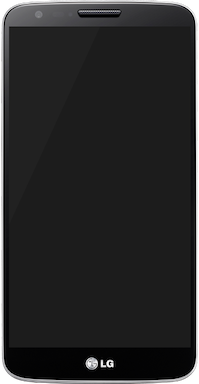Bande à part: LG G2 is the first announced Sprint tri band LTE handset
by Andrew J. Shepherd
Sprint 4G Rollout Updates
Tuesday, September 3, 2013 - 11:35 AM MDT
Welcome back from summer vacation. The S4GRU writing staff, too, has returned and is ready to catch up on some of the developments from over the last two or three months.
In late July, Sprint released two tri band LTE mobile hotspots and one tri band LTE USB dongle. Meanwhile, Clearwire had lit up band 41 TD-LTE 2600 on numerous sites in several markets around the country. Around the same time, the LG G2 became the first Sprint tri band LTE handset to pass through FCC OET (Office of Engineering and Technology) authorization.
As is our tradition by now, we add to S4GRU's stalwart series of articles on the FCC OET authorizations for the HTC EVO 4G LTE, Samsung Galaxy S3, Motorola Photon Q 4G, LG Optimus G, Samsung Galaxy Note 2, HTC One, and Samsung Galaxy S4 our look at the RF faculties of the LG G2:
- CDMA1X + EV-DO band classes 0, 1, 10 (i.e. CDMA1X + EV-DO 850/1900/800)
- LTE bands 25, 26, 41 (i.e. LTE 1900/800, TD-LTE 2600)
- band 25 LTE 3/5/10 MHz FDD carrier bandwidth
- band 26 LTE 1.4/3/5/10 MHz FDD carrier bandwidth
- band 41 TD-LTE 10/15/20 MHz TDD carrier bandwidth
- LTE UE category 4
- W-CDMA bands 2, 5 (i.e. W-CDMA 1900/850)
- GSM 850/1900
- 802.11a/b/g/n/ac Wi-Fi
- 802.11n MCS index 7 (single spatial stream, 40 MHz carrier bandwidth, 400 ns guard interval)
- 802.11ac MCS index 9 (single spatial stream, 80 MHz carrier bandwidth, 400 ns guard interval)
- SVDO and SVLTE support absent
- RF ERP/EIRP maximum: 19.80 dBm (CDMA1X/EV-DO 850), 21.64 dBm (CDMA1X/EV-DO 1900), 23.09-27.08 dBm (LTE 1900), 17.77-21.29 dBm (TD-LTE 2600)
- CDMA1X/EV-DO Rx antenna diversity
- NFC antenna integrated into battery cover
- Antenna locations: (see FCC OET diagram below)
- Simultaneous transmission paths: (see FCC OET diagram below)


The LG G2 is not only the first revealed Sprint tri band LTE handset but also the first Sprint category 4 UE of any kind because it is utilizing the Qualcomm Snapdragon 800 (MSM8974). The MSM8974 is a 28 nm process SoC that contains processor, cellular baseband, and WLAN/GNSS baseband all on one chipset -- à la the MSM8960 that dominated the first half of last year. The difference, of course, is that the MSM8974 has a quad core processor and a UE category 4 cellular baseband. The latter supports up to 150 Mbps on the downlink, 50 Mbps on the uplink -- though those speeds will not likely be seen on Sprint during the lifespan of this handset due to spectrum bandwidth constraints.
Also, we cannot confirm at this point that the G2 is actually using the internal WLAN/GNSS baseband capabilities of the MSM8974 and not a separate chipset solution from Broadcom, as has been the trend with the HTC One and Samsung Galaxy S4. But having at least both processor and cellular baseband on the same chipset should be a step in the right direction.
Regarding maximum ERP/EIRP, we are slightly modifying the way that we report those figures. Even within a given frequency band, max ERP/EIRP can vary according to frequency and modulation. So, if the FCC OET docs show greater than 1 dB of variance in a certain band and airlink, we now report that range instead of a single max figure.
As we have stated in the past, FCC OET testing includes only transmitters, not receivers. Thus, we have to extrapolate overall RF prowess based on mobile uplink transmission capabilities, and that is an inexact science.
In a nutshell, though, the CDMA2000 band class 0 and 1 power outputs appear to be a bit on the weak side, while the band 25 LTE power output looks good. The band 41 TD-LTE EIRP is lower than we would like to see -- especially considering BRS/EBS 2600 MHz propagation characteristics -- but TD-LTE 2600 will be used largely as an offload band for handsets, probably less so for hotspots.
What is missing are band class 10 CDMA2000 and band 26 LTE ERP figures. The original FCC OET filing in late July included only conducted power figures for that band class and band. Conducted power is what is delivered to the antenna, not what is actually radiated from the antenna. And even though the G2 at the end of August has already had one Class II Permissive Change filing, we expect at least one more Class II filing with additional ERP figures before this Sprint variant hits the streets.
Last year, the LG Optimus G had its initial, incomplete FCC OET filing in the summer, followed by a Class II change in the fall and a release in November. In our Optimus G article last summer, we wrote not to expect the street date right away, and we will offer the same caveat here. The rumored November release for the Sprint variant G2 should probably be the expectation.
Source: FCC
-
 20
20








34 Comments
Recommended Comments